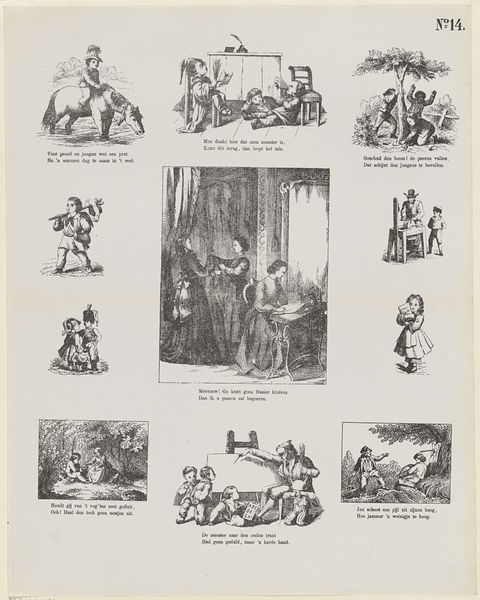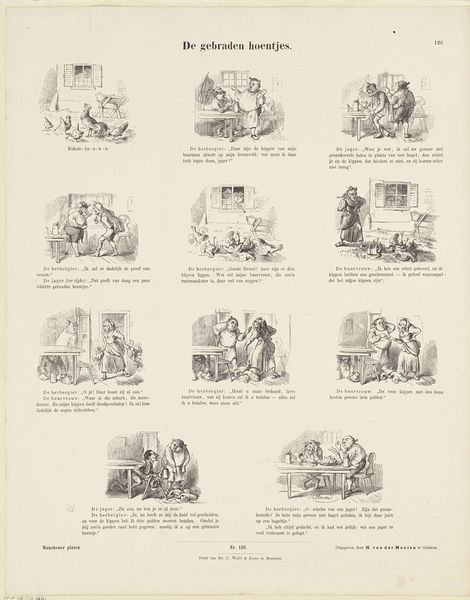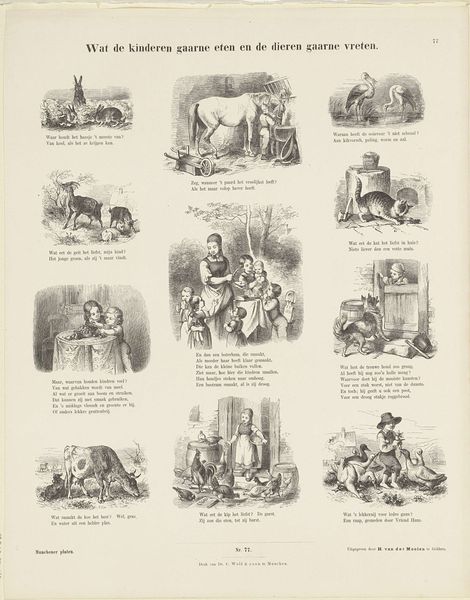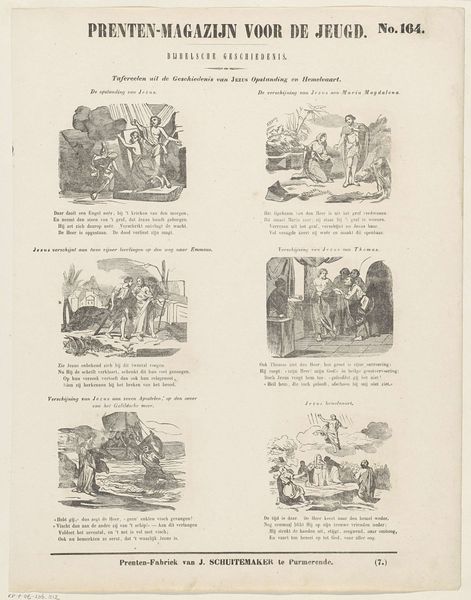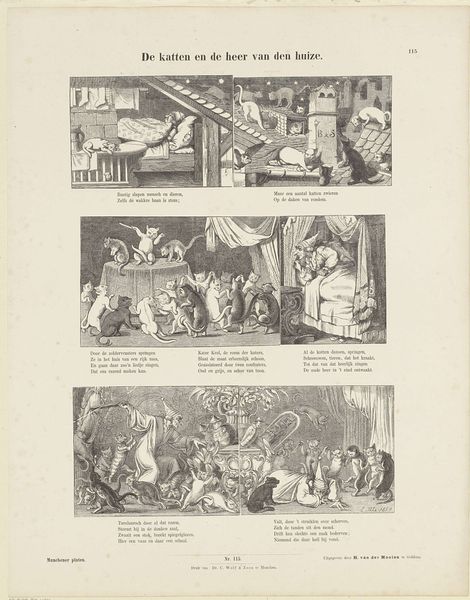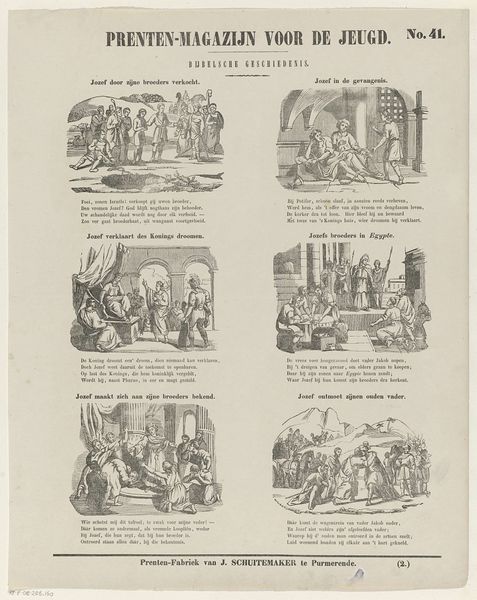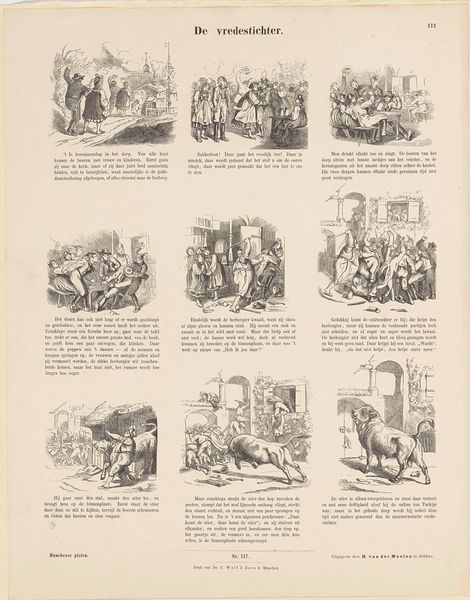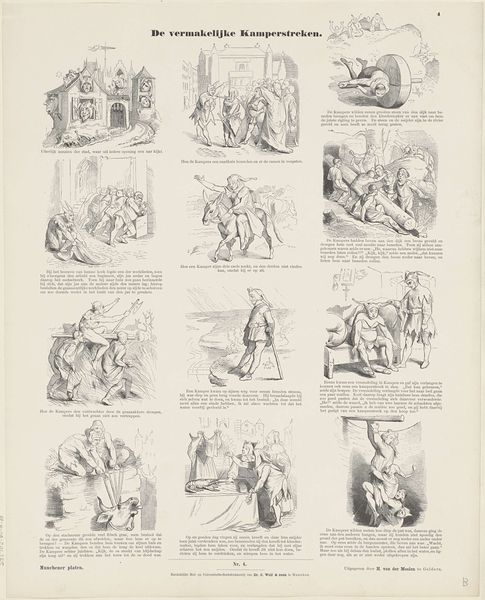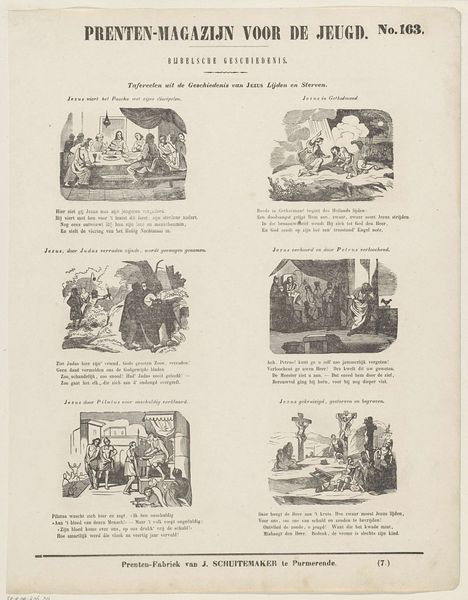
drawing, print, paper, ink, engraving
#
drawing
#
narrative-art
# print
#
old engraving style
#
paper
#
ink
#
folk-art
#
comic
#
genre-painting
#
engraving
Dimensions: height 423 mm, width 308 mm
Copyright: Rijks Museum: Open Domain
Editor: This is "Jack de reuzendooder," made sometime between 1850 and 1881 by Dirk Noothoven van Goor. It's a print made using engraving with ink on paper, depicting what seems to be scenes from a story. The old engraving style gives it a distinctly historical and almost comical feel. How would you interpret this work, especially within the context of its time? Curator: It is intriguing how this print presents a narrative through a series of vignettes, playing into the popular culture of the time. Consider the intended audience; mass-produced prints like this would have been widely accessible, disseminating stories and cultural values. Is it reinforcing specific social norms or offering a form of light entertainment and social commentary? Think about what the "Jack" character might have represented to the Dutch public in that era. A folk hero? A symbol of national identity perhaps? Editor: That makes sense. I guess I hadn't considered the widespread distribution of images like this and how impactful that would've been. It's not just art for art's sake, but really embedded in how people understood stories and their world. But do you think it had political undertones at all, especially given that it was printed around the mid-19th century? Curator: Political undertones are definitely a possibility. Think about the rise of nationalism during this period and the way folk tales were often used to promote a sense of shared cultural identity. Who is Jack fighting? Giants? Who might they represent on a socio-political scale? Understanding that context can help us to see if there were possible subtle messages within the visuals and narrative being conveyed. Editor: So it’s more than just a children's story; it’s potentially a commentary on the relationship between the Netherlands and other powers, using symbolism embedded within popular narratives. Thanks, that shifts how I see it a lot. I need to consider the potential social influence prints like this might have had back then. Curator: Exactly. By understanding the historical context and the socio-political forces at play, we move closer to deciphering the complex meanings behind what appears at first glance to be mere children's entertainment. Now you start considering your audience in an essay; how does this contextual shift affect your personal analysis and writing style?
Comments
No comments
Be the first to comment and join the conversation on the ultimate creative platform.

